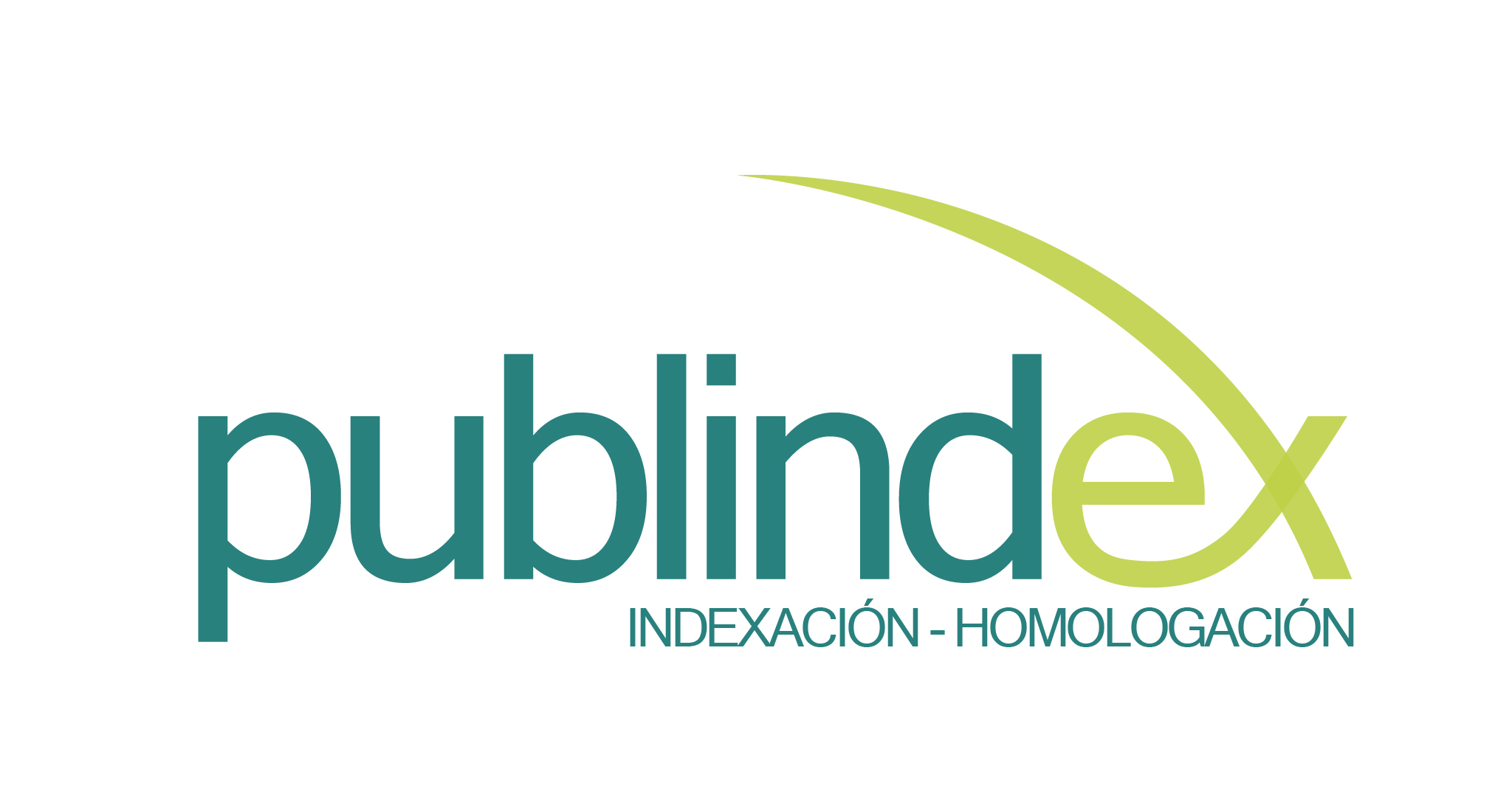Characteristics of microcredit in the manufacturing industry of Pasto city, 2016
DOI:
https://doi.org/10.17981/econcuc.42.1.2021.Econ.4Keywords:
Capital, Microcredit, Microenterprise, Risk, Manufacturing sectorAbstract
For microenterprises, there are great difficulties to finance themselves given their poor credit quality, causing them to restrict traditional credit and, in turn, encouraging the use of informal sources of financing. However, microcredit is established as a financing alternative with enormous potential in regional economic development, since it encourages entrepreneurship and makes it possible to consolidate a business response to the needs of the least favored sectors, which undoubtedly impacts on poverty and, therefore, in development. The present article, aims to determine the characteristics of the microcredit and the level of satisfaction of its users, in the industrial manufacturing sector of Pasto. Therefore, the research has a quantitative approach, developing a type of descriptive study, which was based on a survey applied to 315 manufacturing microenterprises of the municipality of Pasto in 2016. The results show that 64.76% of manufacturing microenterprises accessed to the microcredit, evidencing the moderate presence of exclusion and financial self-exclusion in that business segment. Additionally, microcredit users revealed a low financial education due to their lack of knowledge about the characteristics of the service, like interest rate, fee, term, etc. Finally, it should be noted that, although microcredit users generally stated that the microcredit was appropriate, sufficient and easily accessible, perceive the service as expensive, however, the vast majority stated that they were satisfied with the service and 67% would be willing to continue making use of the microcredit.
Downloads
References
Asobancaria. (2016). La banca colombiana en 2015. [Informe]. Bogotá, D.C.: Asobancaria. Recuperado de https://www.asobancaria.com/wp-content/uploads/2016/06/Informe-de-Tipificaci%C3%B3n-2015-Version-Web.pdf
Avendaño, H. (2006). ¿Es demasiado costoso el microcrédito en Colombia? Carta Financiera de ANIF. Recuperado de https://www.findevgateway.org/sites/default/files/publications/files/mfg-es-documento-es-demasiado-costoso-el-microcreditoen-colombia-5-2006.pdf
Banca de las Oportunidades. (2016). Coberturas. [Online]. Disponible en http://bancadelasoportunidades.gov.co/es/cobertura
Banco de la República. (2017a). Boletín económico regional. IV trimestre de 2016. Suroccidente. Valle del Cauca/Nariño/Cauca/Putumayo. Bogotá, D.C.: Banco de la República. Disponible en https://repositorio.banrep.gov.co/bitstream/handle/20.500.12134/7792/ber_suroccidente_tri4_2016.pdf?sequence=1&isAllowed=y
Banco de la República. (2017b). Reporte de la situación actual del microcrédito en Colombia, septiembre de 2017. Disponible en http://www.banrep.gov.co/es/reporte-de-la-situacion-del-microcredito-en-colombia
Banco de la República. (2016). Reporte de la situación actual del microcrédito en Colombia, septiembre de 2016. Disponible en http://www.banrep.gov.co/es/reportede-la-situacion-del-microcredito-en-colombia
Banco de la República. (2015). Reporte de la situación actual del microcrédito en Colombia, septiembre de 2015. Disponible en http://www.banrep.gov.co/es/reportede-la-situacion-del-microcredito-en-colombia
Banco de la República. (2014). Boletín económico regional. IV trimestre de 2013. Suroccidente. Valle del Cauca/Nariño/Cauca/Putumayo. Bogotá, D.C.: Banco de la República. Disponible en https://repositorio.banrep.gov.co/bitstream/handle/20.500.12134/7621/ber_suroccidente_tri4_2013.pdf?sequence=1&isAllowed=y
Banco de la República. (2010). Situación actual del microcrédito en Colombia: características y experiencias. [Reporte de estabilidad financiera]. Bogotá, D.C:: Finagro. Recuperado de https://www.banrep.gov.co/sites/default/files/publicaciones/archivos/Tema1_sept.pdf
Barona, B. (2004). Microcrédito en Colombia. EG/Estudios Gerenciales, (90), 79–104. Disponible en https://www.icesi.edu.co/revistas/index.php/estudios_gerenciales/article/view/132
Beltrán, L. y Gómez, E. (2017). Educación financiera en estudiantes universitarios. Económicas CUC, 38(2), 101–112. https://doi.org/10.17981/econcuc.38.2.2017.08
Berger, M. (2000). Las microfinanzas: Un mercado emergente dentro de los mercados emergentes. Washington, DC: Banco Interamericano de Desarrollo. Recuperado de https://docplayer.es/17247287-Las-microfinanzas-un-mercado-emergente-dentro-de-los-mercados-emergentes.html
Cámara de Comercio de Pasto. (2016). Anuario estadístico de Registro Público 2016. San Juan de Pasto: Departamento de Planeación Institucional y Competitividad Regional. Disponible en https://www.ccpasto.org.co/?page_id=7025
Canales, M. (2006). Metodologías de investigación social. Santiago de Chile: Editorial Lom.
CIEEF. (2017). Estrategia nacional de Educación Económica y Financiera de Colombia (ENEEF). Bogotá D.C.: CIEEF. Recuperado de https://www.banrep.gov.co/sites/default/files/publicaciones/archivos/estrategia_nacional_educacion_economica.pdf
CIEEF. (2016). Estrategia Nacional de Inclusión Financiera en Colombia. Bogotá D.C.: CIEEF. Recuperado de https://www.superfinanciera.gov.co/descargas/institucional/pubFile1030467/estrategia_nacional_inclusion_financiera.pdf
De La Torre, M. (2018). Utilización del sector financiero para el lavado de dinero: perspectiva desde la legislación ecuatoriana. Jurídicas CUC, 14(1), 145–166. https://doi.org/10.17981/juridcuc.14.1.2018.07
Delgado, B., Arboleda, M. y Paredes, M. (2015). Microcrédito: opción para el microempresario nariñense. Revista UNIMAR, 33(1), 151–163. Disponible en http://editorial.umariana.edu.co/revistas/index.php/unimar/article/view/909
Estrada, D. & Hernández, A. (2019). Situación actual e impacto del microcrédito en Colombia. Bogotá, D.C.: Banco de la República/Asomicrofinanzas. Disponible en https://repositorio.banrep.gov.co/bitstream/handle/20.500.12134/9723/LBR_2019-07.pdf?sequence=8
Garavito, D. (2016). Microcréditos: evolución y situación actual del sistema de microfinanzas en Colombia. Revista Universitas Estudiantes, (13), 49–72. Disponible en http://hdl.handle.net/10554/44433
García, N., Grifoni, A., López, J. C. & Mejía, D. (2013). La educación financiera en América Latina y el Caribe: Situación actual y perspectivas. Serie Políticas Públicas y Transformación Productiva, (12). Caracas: CAF. Disponible en http://scioteca.caf.com/handle/123456789/379
Giraldo, D. (2012). El microcrédito como solución al racionamiento de crédito: el comportamiento crediticio de los clientes de la “Fundación Banco Mundial de la Mujer” en la Ciudad de Cali, en el año 2009. [Trabajo de grado]. Universidad del Valle, Santiago de Cali, Colombia. Recuperado de http://hdl.handle.net/10893/3720
González, L. (Dir.) (2011). Microcréditos para combatir la pobreza. Una introducción a los conceptos básicos de microfinanzas como instrumento alternativo para la financiación del desarrollo. Valladolid: AECID/Universidad de Valladolid. Recuperado de http://cooperacion.uva.es/files/2020/05/Microcreditos_Pobreza.pdf
Gutiérrez, B. (2006). El microcrédito: dos escuelas teóricas y su influencia en las estrategias de lucha contra la pobreza. CIRIEC, (54), 167–186. Recuperado de http://ciriec-revistaeconomia.es/wp-content/uploads/07_Gutierrez_54.pdf
Ordóñez, I., y Guerra, E. (2014). Microcrédito y créditos tradicional e informal como fuentes de financiamiento: facilidad de acceso y costos del capital de trabajo. Revista Entorno, (57), 56–69. https://doi.org/10.5377/entorno.v0i57.6254
Ortiz, C. H. (2009). La desaceleración económica colombiana: se cosecha lo que se siembra. Revista Economía Institucional, 11(21), 107–137. Disponible en https://revistas.uexternado.edu.co/index.php/ecoins/article/view/371
Ramos, A. & Madroñero, N. (2011). El papel del microcrédito en la actividad formal empresarial en el casco urbano del municipio de Pasto 2010. Tendencias, 12(2), 58–81. Disponible en https://revistas.udenar.edu.co/index.php/rtend/article/view/528
Reddy, R., Bruhn, M. & Congyan, T. (2013). Capacidades financieras en Colombia: resultados de la encuesta nacional sobre comportamientos, actitudes y conocimientos financieros. Washington DC: BIRF/Banco Mundial. Disponible en https://www.bancomundial.org/es/country/colombia/publication/national-survey-financial-capabilities-colombia
República de Colombia. Congreso de la República. (02 de agosto de 2004). Por medio de la cual se modifica la Ley 590 de 2000 sobre promoción del desarrollo de la micro, pequeña y mediana empresa colombiana y se dictan otras disposiciones. [Ley 905]. Diario Oficial: 45628. Disponible en http://www.secretariasenado.gov.co/senado/basedoc/ley_0905_2004.html
República de Colombia. Congreso de la República. (10 de julio de 2000). Por la cual se dictan disposiciones para promover el desarrollo de las micro, pequeñas y medianas empresas. [Ley 590]. DO: 44078. Disponible en https://www.funcionpublica.gov.co/eva/gestornormativo/norma.php?i=12672
República de Colombia. DANE. (31 de enero de 2012). Clasificación de Actividades Económicas. [Resolución 066]. CIIU. Rev. 4 A.C. Recuperado de: https://www.dane.gov.co/files/sen/nomenclatura/ciiu/normatividad/Resolucion066_2012.pdf
República de Colombia. DNP. (s.f.). Terridata. [Online]. Disponible en https://terridata.dnp.gov.co/index-app.html#/perfiles/52001
República de Colombia. Presidencia de la República. (3 de diciembre de 2015). Por el cual se crea la Comisión Intersectorial Financiera. [Decreto 2338]. DO: 49715. Recuperado de http://wp.presidencia.gov.co/sitios/normativa/decretos/2015/Decretos2015/DECRETO%202338%20DEL%203%20DE%20DICIEMBRE%20DE%202015.pdf
República de Colombia. Presidencia de la República. (26 de febrero de 2007). Por el cual se determinan las distintas modalidades de crédito cuyas tasas deben ser certificadas por la Superintendencia Financiera de Colombia y se dictan otras disposiciones. [Decreto 519]. DO: 46554. Disponible en https://diario-oficial.vlex.com.co/vid/decreto-352546190
República de Colombia. Presidencia de la República. (8 de septiembre de 2006). Por el cual se crea el Programa de Inversión Banca de las Oportunidades. [Decreto 3078]. DO: 46388. Disponible en http://www.suin.gov.co/viewDocument.asp?id=1780311
Ricardo, D., Arango, L. & Taboada, R. (2020). Microcrédito y pobreza: su relación con el desarrollo endógeno local. Económicas CUC, 41(2), 237–252. https://doi.org/10.17981/econcuc.41.2.2020.Econ.5
Rodríguez, M. (2010). El Microcrédito. Una mirada hacia el concepto y su desarrollo en Colombia. [Tesis de maestría]. Universidad Nacional de Colombia, Bogotá, D.C., Colombia. Disponible en https://repositorio.unal.edu.co/handle/unal/70001
Rodríguez, A. & Venegas, F. (2012). Racionamiento de crédito: perspectiva de la Nueva Economía Keynesiana. Problemas del desarrollo, 43(171), 31–51. http://dx.doi.org/10.22201/iiec.20078951e.2012.171.33487
Ruíz, H. (2011). Conceptos sobre educación financiera. Observatorio de la Economía Latinoamericana, (144). Disponible en http://www.eumed.net/cursecon/ecolat/mx/2011/hrr.htm
Salazar, A., Martínez, D. & Giraldo, M. (2015). Crecimiento del microcrédito en Colombia en los años 2010-2014. [Trabajo de grado]. Universidad de Medellín, Medellín, Colombia. Disponible en http://hdl.handle.net/11407/2181
Supersociedades. (2016). Desempeño del sector de manufactura años 2013-2015. [Informe]. Bogotá D.C.: Supersociedades. Recuperado de https://www.supersociedades.gov.co/delegatura_aec/estudios_financieros/Documents/Sector%20Real%20Economia/EE-%20Sector%20Manufactura-%202016%20VII%2025.pdf
Torre, B., Sainz, I., Sanfilippo, S. & López, C. (2012). Guía sobre microcréditos. Santander: Universidad de Cantabria. Recuperado de http://www.ocud.es/es/files/doc851/guiamicrocreditosmail.pdf

Downloads
Published
How to Cite
Issue
Section
License
Copyright (c) 2020 ECONÓMICAS CUC

This work is licensed under a Creative Commons Attribution-NonCommercial-NoDerivatives 4.0 International License.
You are free to:
- Share — copy and redistribute the material in any medium or format
- The licensor cannot revoke these freedoms as long as you follow the license terms.
Under the following terms:
- Attribution — You must give appropriate credit , provide a link to the license, and indicate if changes were made . You may do so in any reasonable manner, but not in any way that suggests the licensor endorses you or your use.
- NonCommercial — You may not use the material for commercial purposes .
- NoDerivatives — If you remix, transform, or build upon the material, you may not distribute the modified material.
- No additional restrictions — You may not apply legal terms or technological measures that legally restrict others from doing anything the license permits.

 English
English
 Español (España)
Español (España)














